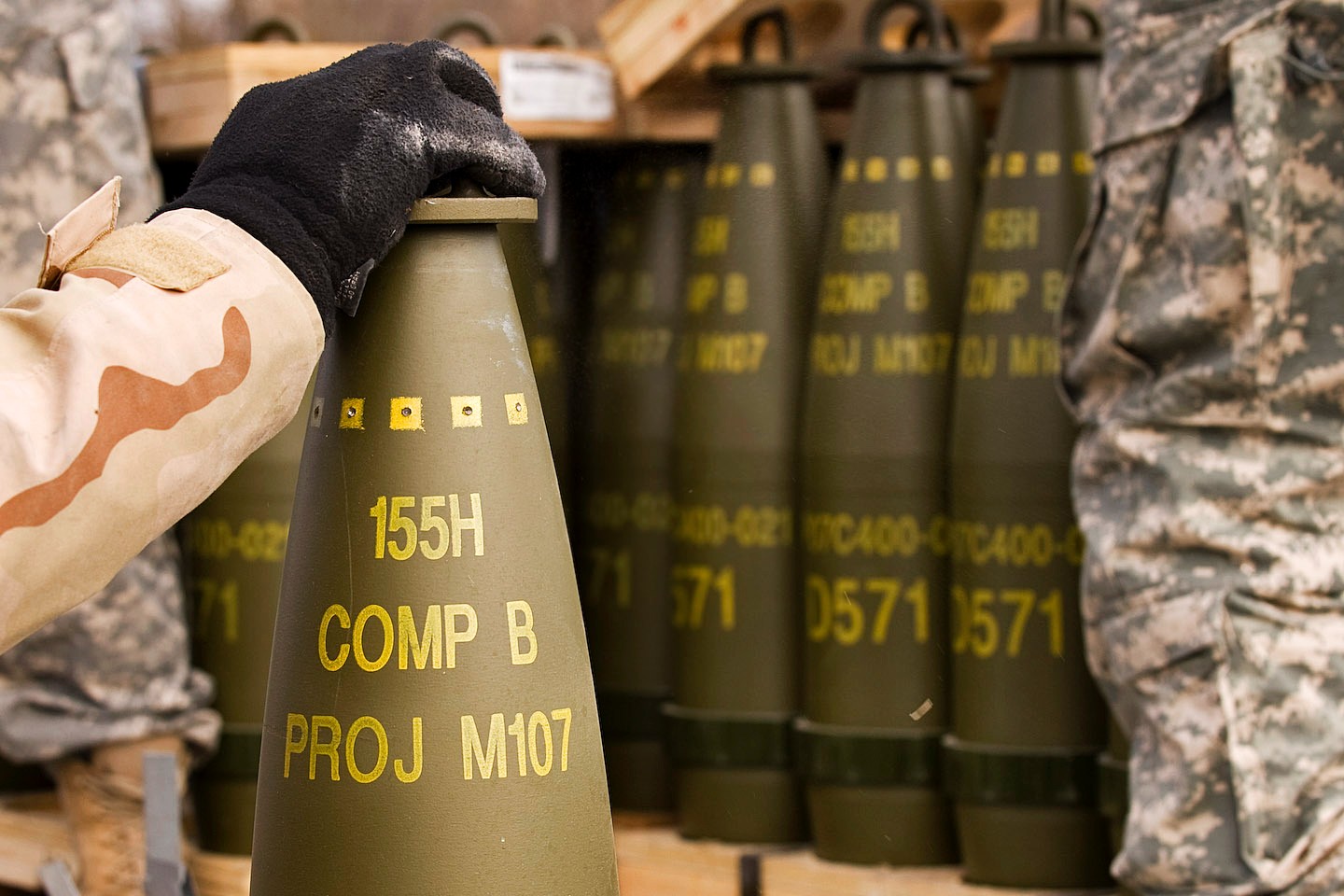The European Union is reportedly struggling to meet its target of delivering one million artillery shells to Ukraine by March 2024, having achieved only 30% of the goal.
13,000 Ukrainian Tanks & Other Military Vehicles Destroyed In Special Military Ops – Russian MoD Says
As outlined in the approved plans earlier this year, the EU committed to supplying Ukraine with artillery ammunition over 12 months, starting with existing stockpiles and subsequently utilizing joint procurement agreements and expanded industrial production.
However, information gleaned from sources and documents examined by Bloomberg suggests that this endeavor has, to date, only fulfilled approximately 30% of the intended quantity. With the current volume of contracts signed, there is a looming risk of failing to achieve the target.
Multiple EU member states have discreetly requested the EU’s foreign policy department to consider extending the contract deadline. At the same time, the United States, which aims to boost its annual projectile production to approximately 1 million by 2024, has urged the EU to intensify its endeavors, according to the report.
EU member states have been cautious in disclosing precise information regarding the resources they have contributed and the particulars of their contracts.
Nonetheless, a few countries, including the Baltic states, Germany, the Netherlands, and Poland, have confidentially disclosed their contribution of approximately 300,000 to 400,000 rounds of ammunition, primarily under the EU initiative.
Additionally, Finland, Sweden, Denmark, and non-EU member state Norway have committed €52 million for future production set to commence next year. The report further mentioned that the cost of ammunition has risen since the initiative’s launch, potentially jeopardizing the current budget’s adequacy to meet its objectives.
However, these statistics do not encompass all shipments made since the onset of the full-scale Russian invasion, and some countries might have acquired ammunition from sources outside the EU or not divulged their deliveries.
Some EU member states also pursued independent procurement programs to bolster their industrial capabilities, mirroring Ukraine’s efforts.
Simultaneously, NATO urged its member states to overcome protectionist inclinations and reach a consensus on a unified standard for artillery ammunition to boost production.
Meanwhile, there are concerns that the conflict in Ukraine is receding from the spotlight as the situation in the Middle East escalates, with Western countries focusing more on events in Israel.
In this context, Kyiv may encounter challenges in procuring and supplying weapons and international support.
Russia Securing Munitions Through Its Allies
While Europe encounters challenges in providing ammunition to Ukraine, Russian factories are projected to deliver an estimated 2 million shells next year. Additionally, Moscow has received supplies from North Korea and is actively procuring Soviet-era shells.
The British Defense Ministry’s October 26 update on the situation in Ukraine claimed the presence of North Korean munitions in western Russian ammunition depots, which serve as vital support for Russian military activities in Ukraine.

This development positions North Korea to potentially emerge as one of Russia’s notable foreign arms suppliers. The ministry further emphasized that if North Korea continues its current rate and scale of military-related shipments, it could soon rival significant suppliers such as Iran and Belarus in significance.
“Despite Russia’s official rejection of recent reports, it is almost certain that North Korean munitions have reached ammunition depots in western Russia. These depots support Russian military operations in Ukraine,” the UK MoD added.
The specifics of what Russia has committed to provide to North Korea in exchange remain uncertain. The complete package is probably still in the negotiation stage, and this has perhaps been a central topic of discussion during recent high-level Russian visits to North Korea.
Latest Defence Intelligence update on the situation in Ukraine – 26 October 2023.
Find out more about Defence Intelligence's use of language: https://t.co/XtDEBWEdcc
🇺🇦 #StandWithUkraine 🇺🇦 pic.twitter.com/lVCkzVawFK
— Ministry of Defence 🇬🇧 (@DefenceHQ) October 26, 2023
This arrangement is likely to include a combination of financial compensation, various forms of economic support, the transfer of military technology, and collaboration in other advanced technology domains, such as space.
In addition to these developments, Col. Ants Kiviselg, who leads the Estonian Defense Forces (EDF) Intelligence Center, has noted that Russia currently possesses approximately four million artillery shells, which could sustain low-intensity warfare for another year.
Simultaneously, receiving an extra 350,000 artillery shells from North Korea indicates Russia’s intention to prolong its conflict with Ukraine over an extended period.
Kiviselg explained that providing ammunition to the frontline doesn’t necessarily serve as the primary objective or an immediate necessity. Instead, it represents a strategy of building and maintaining stockpiles for long-term considerations.
- Contact the author at ashishmichel(at)gmail.com
- Follow EurAsian Times on Google News